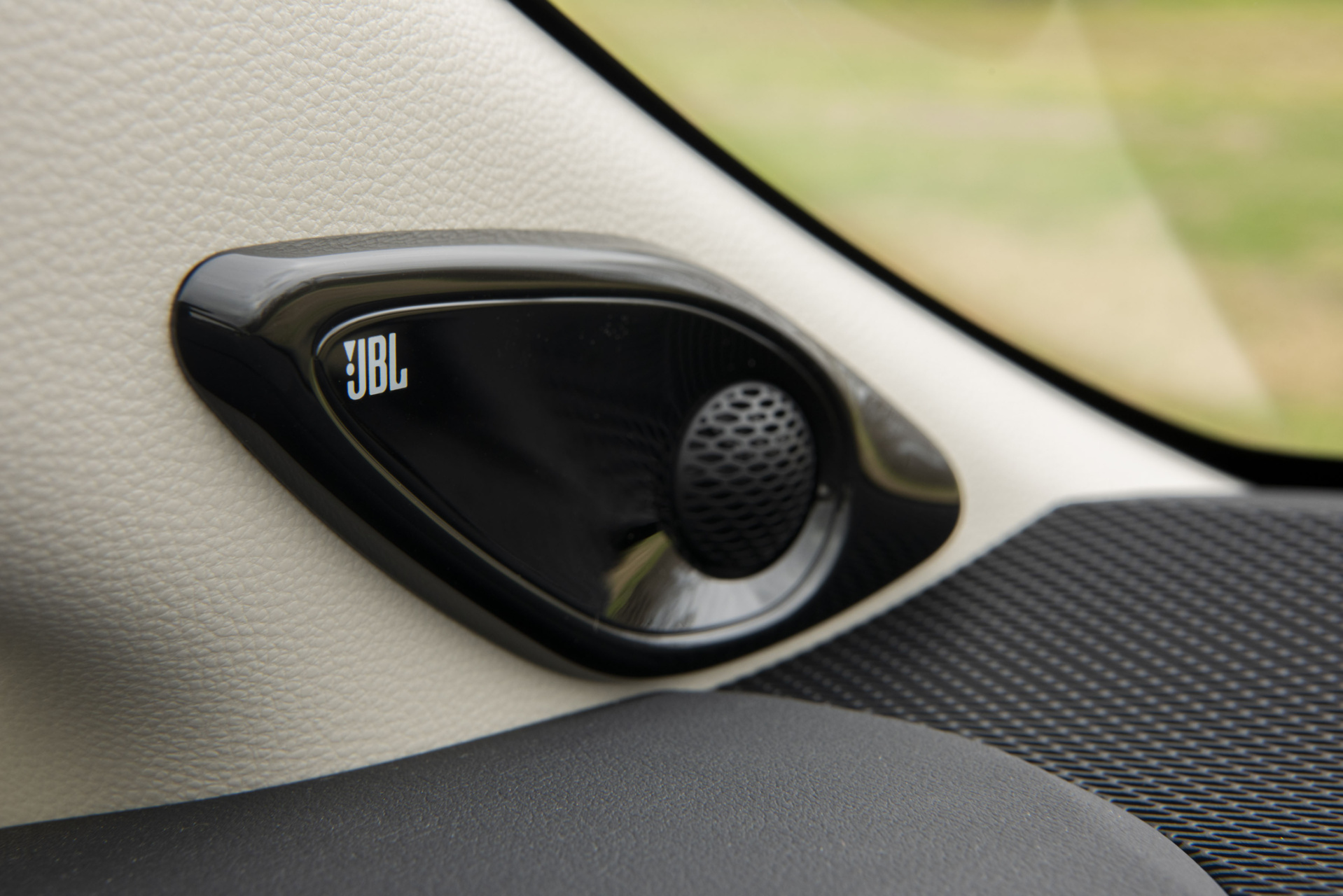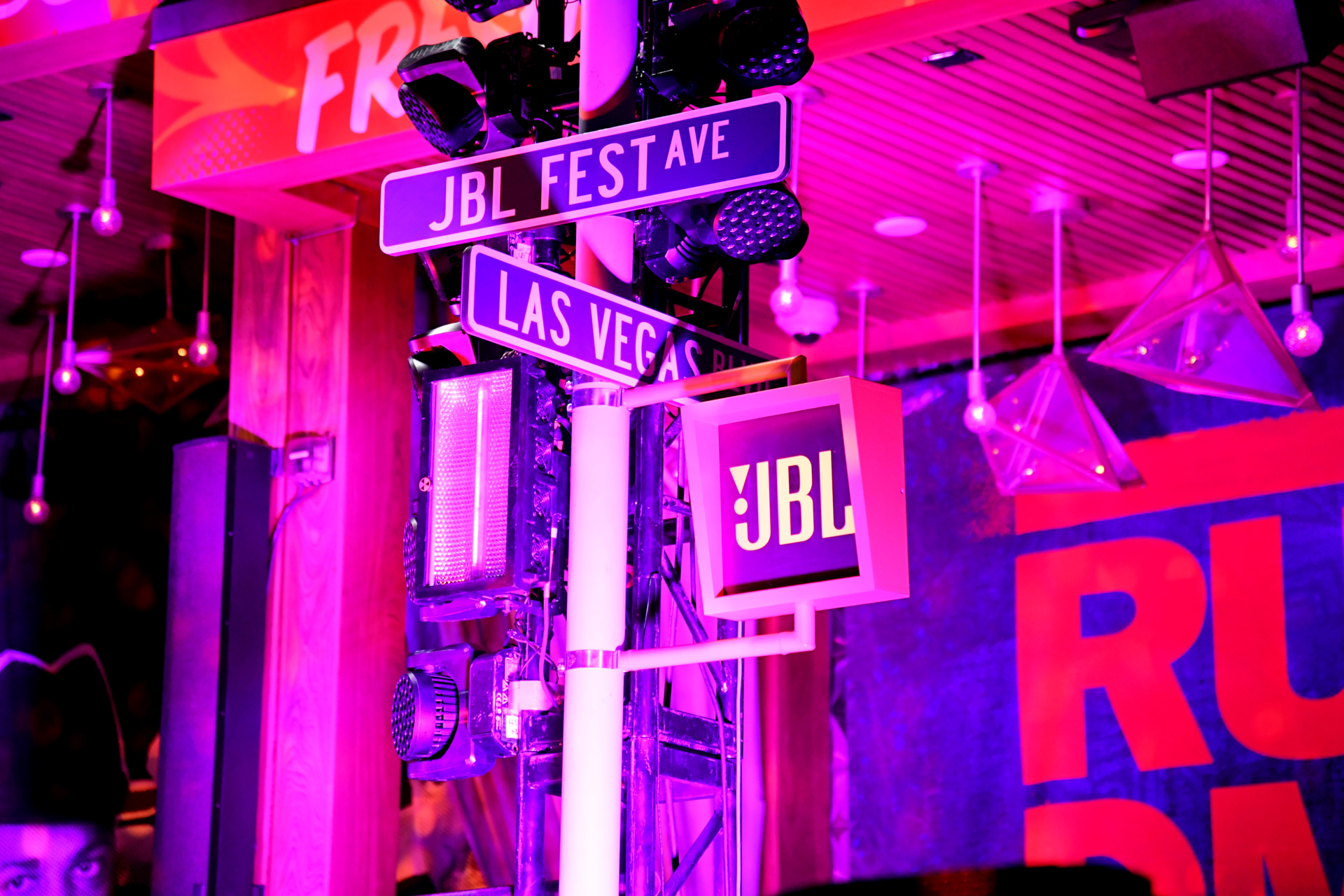JBL has been pushing the boundaries of premium audio for the past 73 years. Since then, it’s firmly established itself as a household brand. Along with being a consumer favorite, JBL also redefined the audio industry. Back in 1969, the legendary Woodstock was completely powered by JBL Professional loudspeakers. Over the years, JBL has delivered powerful and immersive sound experiences at a wide range of events, from presidential inaugurations to concerts at Madison Square Garden and the Staples Center, the Coachella Festival, and countless games at major stadiums.
This year, the Surfing Sound Waves team once again joined JBL at their JBL Fest, a highly-anticipated annual event in the heart of Las Vegas. The three-day even brought together the brand’s loyal fans, partners, influencers, brand ambassadors (including Priyanka Chopra, Khalid, Shaq), journalists, and of course, performers and entertainers (RUN-DMC, Bebe Rexha, Mabel).
JBL Fest is a unique way for JBL to educate their guests about their brand. The event gives people the chance to connect with them and learn firsthand from the people who have built up the company by creating high-quality products beloved by musicians and consumers alike. We were happy to have the chance to connect with JBL engineers and learn more about JBL’s powerful car audio systems.
Most automakers have realized by now that in-car entertainment is very important. They’re working with companies like Harman to transform cars into concert venues on four wheels. At the same time, companies that make speakers and amplifiers understand that artists are depending on them to faithfully reproduce the music that they’re creating in the studio, no matter where their audience is listening. Musicians put their heart and soul into what they make, and JBL is committed to delivering it to people with the best quality.
We wanted to learn from the experts about what to pay attention to in order to have the best in-car music experience, so we headed on a road trip to Valley of Fire, just outside of Las Vegas, driving a new Toyota with a 12-speaker JBL audio system and blasting our favorite tracks.
- Spectral Balance
Spectral balance is the balance of bass, mid-range and treble frequencies. JBL calibrates these settings so that most things will sound good out of the box, but also gives people flexibility to find what sounds good to them. Most people are familiar with bass, mid-range and treble, the low-, mid- and high-frequency sounds that are present in music. Keeping your sound system’s equalization (EQ) flat allows you to hear your music in the most accurate way possible. The audio engineers who craft these systems tune the vehicle’s stereo for flat equalization, based on the audible spectrum.
- Spatial imaging- creating a soundstage across your dash
While frequency balance is something that a lot of people are familiar with, fewer people really think about the spatial imaging of an audio system. This refers to where you hear the sound coming from in your car. Think of the dashboard as the stage. As you are driving- where is the audio image coming from? It should be coming from either directly over the wheel or slightly to the right. Your system should create a “soundstage” in front of you. What that means is that when you close your eyes (not while you’re driving!) you should hear the instruments as though they’re directly in front of you, arranged from far right to far left. When your soundstage is set up correctly, it’s like the band is playing a set on your dashboard. If you close your eyes, you should be able to “see” where the vocals are coming from. If you can quickly pinpoint specific instruments’ locations across an imaginary soundstage that seems wider than the car’s interior, that’s a system that is well-configured. In a concert, the musicians are on a stage in front of you, and likely they are well in front of you as you’re sitting in the audience. Good SQ systems will create the illusion of a similar stage well in front of you. Engineers spend a lot of time to balance a system for the particular car that it’s installed in, ensuring that the stage extends the entire length of the dashboard. That’s what separates brand-name audio systems from others.
- Volume
You should be able to have the experience you want, with audio that sounds nice and balanced at both high and low volumes.
- High Quality
Wired connections always will provide better quality sound, but there’s nothing wrong with Bluetooth, and Spotify, Apple Music, Amazon, Google, Pandora, Tidal all are great sources for high-quality audio. Tidal is a really great source, because it’s CD-quality lossless streaming. And if you do stream music from other services, explore the settings in your music apps to step up your audio quality. When you’ve taken the step to make sure that your car’s audio system is high-quality, it’s important to make sure that you’re downloading or streaming high-quality audio files as well.

The SSW team got a chance to catch up with Jonathan Pierce, Senior Manager, Global Experiential R&D, who is in charge of sound quality for JBL. Jonathan is a music lover focused on developing the world’s best automotive audio experiences. By using research and robust measurement techniques he truly understands the relationship between artist’s intent and listener preference. We talked with him about his role at JBL and how he works to create a great listener experience in vehicles.
SSW: Are you personally involved when JBL tests audio systems?
Jonathan Pierce: Yes! I used to be an engineer, tuning the cars, and then I got more into the research side. Now I do quality control. I train listeners: take the average consumers and train them to understand the concepts we discussed- spectral, spatial. We run 10-12 listeners for every car. The tuner has 200 hours to actually tune the system. Then it comes to my team, where we have 30 unique listeners for the pre-production cycle of the car, and we spend an additional 200 hours verifying the sound.
If I know nothing about these specifications, and I’m getting in the car right now, I don’t know what to listen for. What do I focus on?
Find a song you know really well. I would look left to right spectrally. I’d start with the bass. Does the bass sound tight? Meaning, does it sound loose and stretched out, or succinct and tight? Then I’d look at mid-range and listen to how flat and neutral the mids are. Then I’m looking to the the treble. The treble should be an extension of the mids, nice and detailed. None of that should sound like it’s out of place. Now I’m going to look into spatial—I’m looking at how wide my stage is. And then I’d check surround sound mode and the last thing is dynamics: I would turn up the volume and make sure whatever my preference was at normal listening, I want to make sure that I’d have that at loud listening as well.

Do regular people know how these setting are supposed to work? Are people educated about audio systems?
So if we are looking at the tone controls of the car, you have your standard treble, mid and bass, fade and balance. The thing about fade and balance is people don’t understand that when they fade things to the rear, they typically are trying to get more of a surround feel, but it’s taking energy away from the front speakers by doing that. So you’ve got fade and balance, and tone controls, so you can spectrally adjust the amount of bass, mid-range or treble. And I do think that we as people in the music reproduction industry take for granted that we understand these things, but I don’t think that the general consumer does. When we tune the system, when the tuner sits in the driver seat with a computer on their lap and they are connected to the amplifier, they are focusing on all of these individual speakers here, and they can adjust the tone controls of all of these individually, the volume of the speaker, they can time delay the speakers. And the whole system is tuned to work together! So now by adjusting you are taking away capabilities of, for example, the bass capabilities of the back speaker.
So if you guys know that these are the perfect settings, why give people the opportunity to mess it up?
Auto makers definitely want to give people freedom to choose. I can see the reason for people to make these adjustments, but we also need to educate people, so it doesn’t damage the experience. When it comes to tone controls, I think music is very subjective. I think educating people about what is actually changing is something we should definitely focus on. When people come to my facility in Michigan, I have a whole presentation about this and we talk about what instruments fall within these frequency ranges. Giving people a bit more ownership of their experiences is very very important.
I always thought the artist created the song exactly the way they wanted it to sound, so for me it is more of why am I messing with their art?
It’s always that challenge. It was made and mixed in a certain way, they painted their picture right there, but it was only representative of the monitors they were using in the studio at that time, so they painted that picture based on the frequency response characteristics of those speakers. Then they hand it off to the company like us, or Bose or Burmester, and say: please recreate it as faithfully as you can, based on what I created. And it’s impossible to know exactly what that sounded like.
We talked about Tidal being CD quality. Do you think Tidal helps to stream music in the way it was intended to sound?
CD signal is created in the studio, rendered down to 16 bit 44k, which is still very very good. What digital compression then does (for example, Spotify), is that they need to make it small enough to meet bandwidth requirements for people’s phone devices, and the only way to do this is to throw away data. They are very strategic about it, I would say they are very sophisticated these days, but they are still throwing away the information that was supposed to be heard. Now Spotify, Pandora, Google, Apple, they are very sophisticated, most people wouldn’t be able to tell much difference on the high setting of these applications compared to CD quality. Tidal decided they were not gonna compress at all, and deliver the total CD quality sound. It’s the closest to what the artist intended, but it comes with the cost of a lot of bandwidth. And Spotify has settings within their application, and it usually defaults to normal. Spotify has done a clever thing where it automatically detects your bandwidth signal and it will then increase or decrease the quality of the music. Spotify is ahead of the game when it comes to that. And Tidal is recognizing their role in music reproduction and that it’s important to give people the option to get back to how music can sound without the loss of data. And it’s a no brainer: people would rather choose high-quality music.
Thank you to JBL for creating an unforgettable experience and providing a chance to learn from the best in the industry! We are absolutely looking forward to #Year4 of JBL FEST in 2020!




